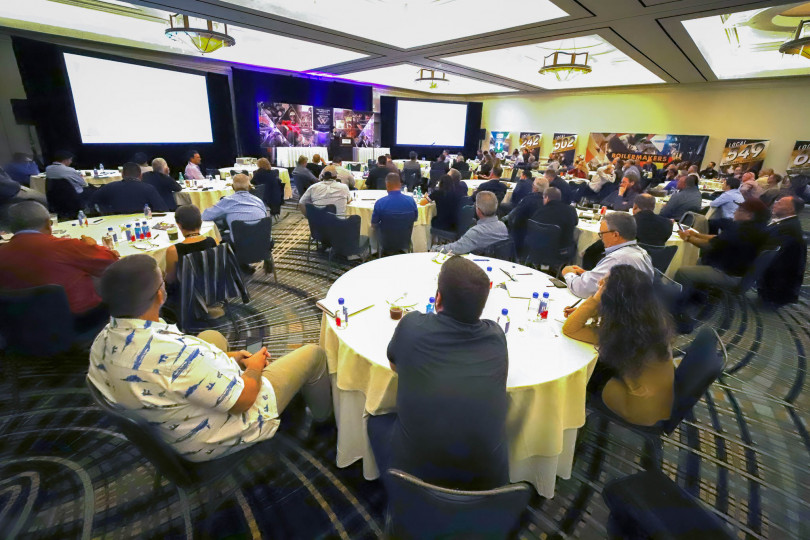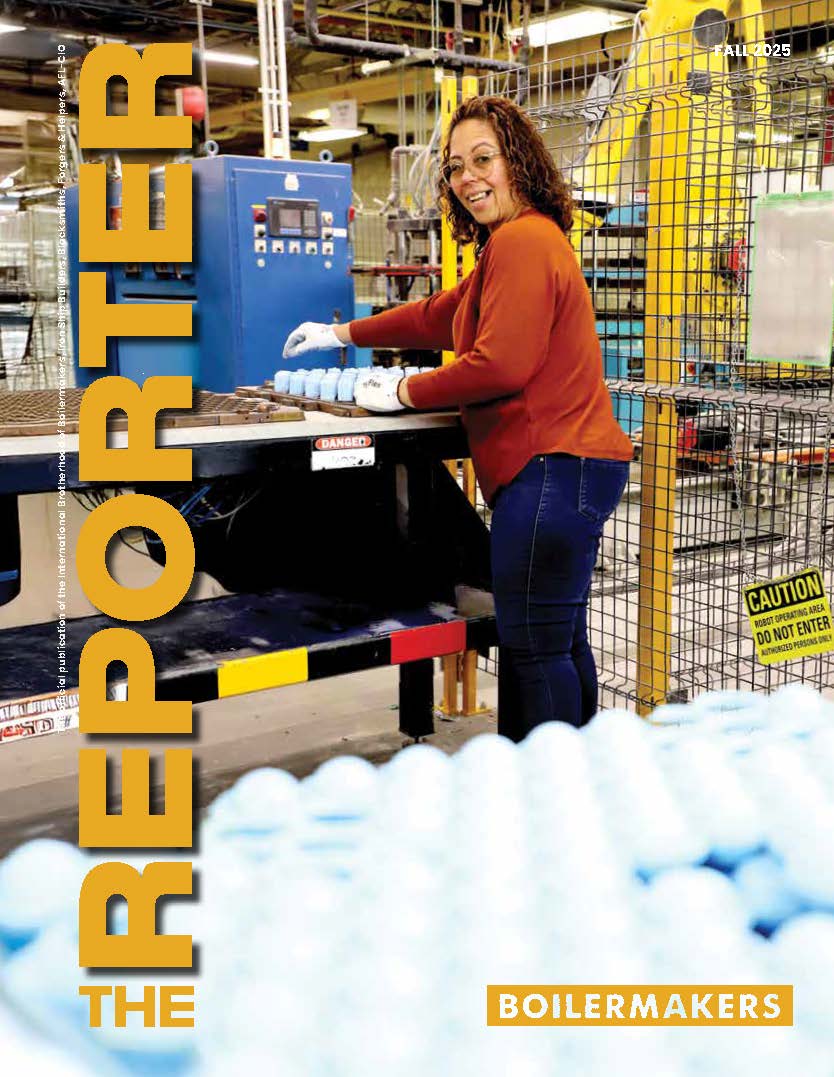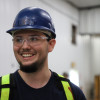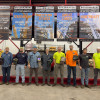There’s so much heavy lifting that’s done by the Boilermakers in California, relating the message that needs to be related to the voters, the legislators and other policymakers about things like carbon capture and hydrogen. It’s heavy lifting that’s benefiting all of our affiliates.
Boilermakers, contractors and owners meet to discuss concerns and opportunities at the 2022 Western States Tripartite conference.
View Photo Gallery (7 photos)
Boilermakers, contractors and owners gathered in Santa Monica, California, March 22 for the 2022 Western States Tripartite Conference to discuss mutual concerns and opportunities. Under the theme “Seeking Solutions for a Stronger Industry,” safety and the future of the energy industry were two topics that featured prominently into presentations and discussions.
“As always, we are focused on our employers’ needs and what we can do to help them succeed,” said J. Tom Baca, IVP-Western States, welcoming participants. “We haven’t been able to hold this event since 2019, and it’s important for us to come together to talk about how we can improve the industry and what we do.”
Ed McWhorter, Regional Operations Manager at Babcock & Wilcox and Western States Contractor Chairman facilitated the meeting alongside IVP Baca.
Keynote speakers were Ian MacGregor, founder of Hydrogen Naturally, Inc., and Sarah Saltzer, PhD, managing director of the Stanford Center for Carbon Storage. MacGregor outlined the potential for large-scale Boilermaker work as hydrogen gains traction as an energy transition solution.
What we’re focusing on is the full carbon cycle, and we will be carbon negative in the hydrogen we make.
MacGregor, who is a visionary and entrepreneur, is working on a new project, Hydrogen Naturally, Inc. that will finance, build and operate hydrogen plants that use scrap wood fiber as feedstock. The goal is to remove millions of tons of CO2 from the atmosphere and make large quantities of clean hydrogen. He describes the product as “bright green hydrogen,” and his first plant is currently in planning stages in Fort Nelson, British Columbia.
MacGregor has plans to build 50 plants and estimates each plant will generate 5 million man-hours.
“Time is running out (on the climate change problem), we’ve got to get doing something,” he said. “What we’re focusing on is the full carbon cycle, and we will be carbon negative in the hydrogen we make.”
While a major undertaking, this isn’t the first time MacGregor has addressed and successfully brought a large-scale solution to life—nor is it the first time he’s worked focused on hydrogen. A previous project, the Sturgeon Refinery, which became part of North West Refining in Alberta, was the first greenfield refinery to be built in Canada since 1984 and is the world’s first refinery designed to capture CO2 process emissions from the outset.
“I like problems,” MacGregor said in describing the pitfalls and development of Sturgeon Refinery, which he believes to be the largest blue hydrogen plant in the world. “This was one of the most complicated problems I ever worked on in my life.”
Saltzer explained the role carbon capture and storage will play in California’s net-zero goal.
“I’m an all-of-the-above believer,” Saltzer said. “We need to invoke everything we can. California has some really ambitious greenhouse gas goals.”
She said that in order to meet 2050 climate goals, 100 gigatons of CO2 has to be captured and stored. In order to do so, she noted, carbon capture needs to be included or retrofit into all industries, from energy production, refineries and cement plants to manufacturing. In the history of carbon capture and storage, only about 300 million tons have been captured and stored so far, she said.
“What’s very clear is that we have a number of challenges for CCS in California,” she said. “We need to come out and say that CCS is part of the answer, part of the solution for California. There’s a lack of public awareness and support for CCS. People don’t know what it is. We need to increase public awareness and education.”
Other presentations included an overview of CCUS and hydrogen’s future by International Director of Climate Change Policy Solutions Cory Channon; proposed California CCUS and energy legislation, by Erin Lehane, the State Building and Construction Trades Council of California’s legislative director; the latest U.S. legislation updates, by Director of Legislative Affairs Cecile Conroy; Western States forecasting and recruitment, by Marketing Manager Johnny Baca; the status of the Boilermakers apprenticeship program by WSJAP Coordinator Collin Keisling; and the EPRI Standardized Task Evaluation Program, by Adrian Hendren, technical lead, training & STE for EPRI.
Per Lorentzen, operations manager for Cherne Contracting Corp. and Western States Tripartite Contractor Chairman, and Mark Garrett, MOST Programs administrator, reported on health and safety as well as MOST Programs updates.
The event also recognized and thanked SBCTC President Emeritus Robbie Hunter, who retired in 2021, and introduced Andrew Meredith as SBCTC’s new president.
“There’s so much heavy lifting that’s done by the Boilermakers in California, relating the message that needs to be related to the voters, the legislators and other policymakers about things like carbon capture and hydrogen,” Meredith told participants. “It’s heavy lifting that’s benefiting all of our affiliates.”
Rounding out a substantive day, Boilermakers, contractors and employers met in individual caucuses to identify and discuss issues to bring before the full tripartite. Representatives from each group reported on caucus discussions.
Additionally, Steve Giffin, Turnaround Improvement Campaign Manager for PBF Energy, was appointed to serve as the Western States Tripartite Owner Chairman.












